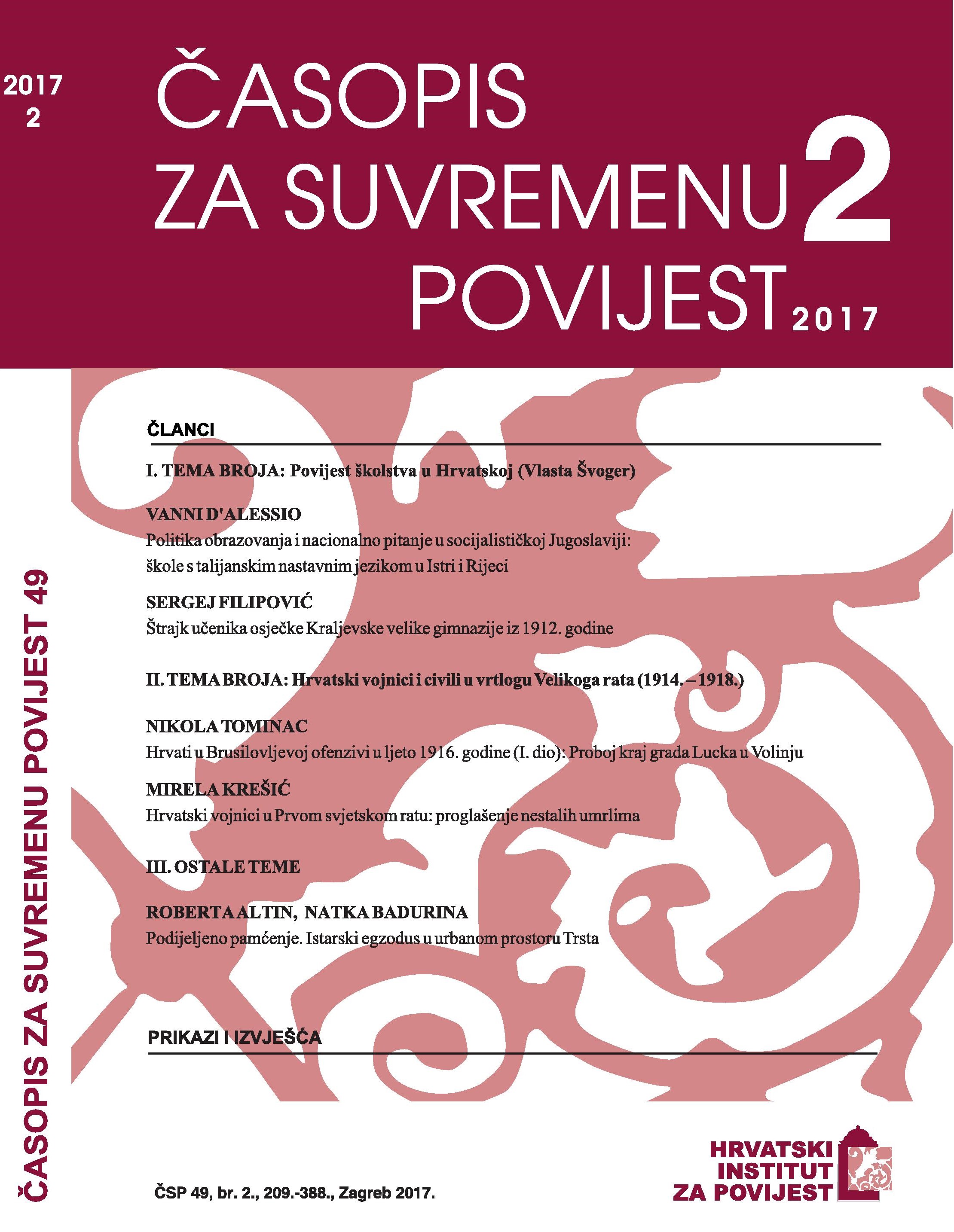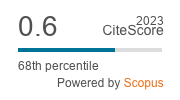Divided memory. The Istrian Exodus in the Urban Space of Trieste
DOI:
https://doi.org/10.22586/csp.v49i2.5Keywords:
Istrian Exodus; Trieste; places of memory; Museum of the Civilisation of Istria, Fiume and Dalmatia; Warehouse 18 in Trieste; foibe; politics of fearAbstract
The article examines the Italian memory of the emigration wave near and after the end of World War II, when 250,000 people, almost exclusively Italians, left Istria, Rijeka, and Dalmatia. The emigration wave was named the “Istrian Exodus” or the “Julio-Dalmatian Exodus” in Italian journalism and historiography. The historical context of this event and the presumptions regarding the causes of the migration are briefly presented in the first chapter. The goal of the article, however, is neither to determine new historical facts, nor to offer new interpretations of complex and conflicting political histories, but to examine the memory of the Istrian Exodus as a collection of places in which historiography, public history, politics, and collective memory are interwoven and influence each other. The article’s approach is based on studies of memory and heritage as a dynamic process, and identity as a construct in an interethnic context. Its goal is to find the reasons why a collective memory still doesn’t exist in this border area. During the Cold War, the Italian public wasn’t particularly interested in preserving the memory of this exodus. The first historiographical study was published only in 1980, but a multitude of works have been published from the 1990s on, from thorough historiographical research to various popular and often manipulative forms of public history. The political interpretation of the exodus that became dominant in the 1990s is influenced by Italian national consensus and an exclusively ethnically-based interpretation of the migration, where the memory of the Fascist rule and Italian occupation of Yugoslav territories and the ideological aspects of the conflict in Wold War II are ignored, as are the basic particularities of border areas – fluid identities and plurilingaluism. The article then presents three recently inaugurated places of memory related to the exodus in Trieste. The first subject of analysis is the Museum of the Civilisation of Istria, Fiume and Dalmatia opened in 2015, which constructs a timeless, primordial and pure “Italianity” of this region, which is shown as meeting its first clash with history during World War II and in which the trauma of the foibe represents an unbridgeable identificational hub. Warehouse 18 in the old port of Trieste is an interesting place combining an authentic warehouse and a museum, in which, through the serial repetition of abandoned items, the visitor is induced to spot the similarity with heaps of personal items in Nazi concentration camps. The comparison of the exodus with the Holocaust is also highlighted in the third topic analysed herein, a theatre play by Simone Cristicchi entitled Warehouse 18 that, based on the model of “community theatre”, attempted to raise the historical conflict to a higher, panhuman level and teach the inhabitants of Trieste to remember without hatred.However, it did this in a similar way to the Museum and the Warehouse, basing its story on ethnic exclusivity, which can hardly serve as the basis for creating a common history and overcoming historical traumas.
Downloads
Published
How to Cite
Issue
Section
License
Copyright (c) 2017 authors and journal

This work is licensed under a Creative Commons Attribution-NonCommercial 4.0 International License.
Copyright holders are the publisher Croatian Institute of History and the authors. Journal of Contemporary History is an Open Access journal. Users are allowed to read, download, copy, redistribute, print, search and link to material, and alter, transform, or build upon the material, or use them for any other lawful purpose as long as they attribute the source in an appropriate manner according to the Creative Commons licence CC BY-NC. The papers published in Journal of Contemporary History can be deposited and self-archived in the institutional and thematic repositories providing the link to the journal's web pages and HRČAK. Journal does not charge article processing charges (APC). The editors assume no responsibility for statements of fact or opinion made by contributors.




